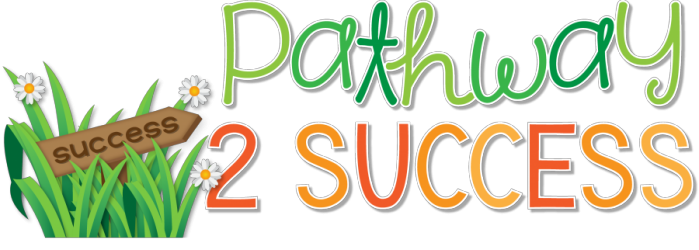
Executive functioning skills are the processes we use in our brain to accomplish daily tasks. It’s true that we use a variety of executive functioning skills when completing academic work, but the truth is that these skills are actually life skills. We use them all the time in daily chores and tasks, from planning a meal to tidying up a room and so much more.
Use this article as a guide to give some ideas for practicing executive functioning skills at home. This has become increasingly important while students are home from school, but truly it’s important all of the time. These are simple strategies educators can suggest to parents to help kids develop stronger skills for planning, organization, time management, attention, and more.
If you need more background on these skills and why they matter, read everything you need to know about executive functioning skills here.
To get started, read through each of the executive functioning skills and some strategies to try them out at home.
Planning
Planning is making a road map to help achieve a goal. Students might plan for a long-term assignment or plan how to tackle a challenging homework page. We also use planning lots of times in real life outside of school, such as planning what to make for dinner for the week.
Some strategies to strengthen planning skills at home include:
- Plan for a meal. Choose the meal you want to make, list out the ingredients, and review the steps before making it together. If you can, go ahead and make the meal together. The process of actually cooking a meal involves lots of skills from attention to follow the instructions to flexibility when something doesn’t go exactly as planned.
- Plan a trip. Discuss what your dream vacation would be. Practice planning by thinking about where you would go, what time of year might be best, what you would bring, and more. Of course, this activity can be just for fun or really to plan a family vacation. That’s up to you.
- List it out. Take one task, such as making a sandwich, and break it apart to all the small steps. Then, act it out following those steps. This can be a fun activity, because it’s easy to see how many small steps there are to every activity.
- Fill the calendar. Try to think of as many events and activities for the year as you can. List them out on a yearly calendar ahead of time.
- Make a daily checklist. Before starting the day, work together to come up with a daily checklist of tasks that need to get accomplished. After each task is accomplished, check it off!
Organization
Organization is developing and maintaining a system to stay neat and tidy. Learners might need organization skills to keep binders and supplies tidy. They also use organization when putting their ideas together before starting a project. Organization is also critical beyond school for keeping our homes neat and having systems in place to help us complete work efficiently.
Some strategies for organization at home include:
- Organize a room. Choose one room or area of the house and organize it together. Doing an organization project together makes it considerably more manageable for everyone involved. You can even listen to music while you clean to make it more fun.
- Sort and tidy. Choose something that could be sorted, such as a pile of clothes or a stack of books. Discuss how they can be sorted and work it out together.
- Cut and paste organize. Make learning about organization a fun activity with a simple cut-and-paste craft. Use this free “Organize the room” activity to get started. Simply cut out the items and paste them onto the picture of the room where they should go. Of course, you can do this by taking a picture of any room, cutting out items in a magazine, and pasting them on the picture!
Task Initiation
Task Initiation is the process of getting started on tasks right away. This includes overcoming procrastination and staying motivated, even when it’s something we don’t want to do.
Some strategies for working on task initiation at home include:
- Practice rocket ship 5-4-3-2-1. Discuss how starting, or initiating, a task is like a rocket ship blasting off. This is a strategy to help you get up and going, even when you’re not very motivated. Sit and count down 5, 4, 3, 2, 1. At the end of the countdown shout, “Blastoff!” and hop up.
- Break down the task. Choose one daily task or chore that you need to accomplish. Break it down step-by-step. This can be a helpful strategy to “get going” when a task seems daunting or too long.
- Make a reward list. Come up with small rewards to give yourself after you finish a task. These can be really simple rewards, like time watching your favorite show, time outside, getting to play videogames, or anything else. Identifying these incentives ahead of time can help us stay motivated and ready to go.
Time Management
Time Management is using techniques and strategies to make effective use of time. This involves having an accurate understanding of time, ignoring distractions, and working well when we need to.
Some strategies for working on time management at home include:
- Estimate and compare the time. Take any task and estimate how long it might take to complete. Then, actually complete that task and compare the times.
- Beat the timer. Choose any task, such as folding laundry or putting away groceries. Estimate how long you think it will take you to complete. Then, set the timer and try to beat it.
Self-Control
Self-Control is the process of stopping and thinking before making a choice.
Some strategies for practicing self-control at home include:
- Practice coping strategies. It’s important to practice coping strategies when we are calm so we can use them when we are overwhelmed. Spend time practicing listening to calming music, exercising, coloring, and more.
- Practice positive self-talk. Self-talk can be a healthy strategy to keep us calm and collected. Come up with some positive phrases that can help keep your cool. You can even make positive self-talk a morning ritual to start the day in a positive way.
- Practice mindful breathing. One of the best ways to work on self-control is by practicing our breathing. Use these mindful breathing activities for kids and teens to get started.
- Play games. So many different games align themselves to work on self-control skills, from Freeze to Simon Says. Read more about games you can use to practice self-control.
- Discuss scenarios. Come up with problem-solving situations. For example, you might say, “You want to watch your favorite show, but your sibling is already in the room watching theirs. What can you do?” Think about the situation by discussing what the problem is, what your choices are, and how you might handle the situation. Use these free scenario cards to get started.
Attention
Attention is being able to focus on a person or activity for a period of time. It also involves being able to shift focus and ignore distractions.
Some strategies for working on attention skills at home include:
- Hold a conversation. Choose any topic to discuss, free of distractions for a period of time. Use these free printable conversation starters to get started.
- Make a distraction list. Make a list of your biggest distractors. Then, come up with strategies to reduce or avoid them.
- Work focused. Use a timer to set a period of time (such as 10 minutes) and do chores or other activities during that time. Try to stay focused and not get distracted while the timer is running.
- Take a brain break. Practice spending time doing something calming, like deep breathing or mindful coloring to give yourself a break.
Metacognition
Metacognition is thinking about your thinking. Using metacognition skills helps us consider what we know about a topic before we learn, check in with ourselves while we’re learning, and reflect to grow our skills.
Some strategies for working on metacognition skills at home include:
- Talk, read, discuss. Choose a book (non-fiction books are the best for this). Talk about the topic and list off things you know about it. For example, if you are reading a book on airplanes, list off everything you know about airplanes. Then, read. Afterward, discuss what you’ve learned. Note that this same process can be done for any non-fiction videos, too!
- Circle share. Choose any topic. Starting with one person, list off one thing you know. For example, if your topic is plants, you might list off that you know plants start as a seed. Then, go to the next person and have them list off something they know. Continue this for as long as you can to help create shared knowledge on a topic.
Flexibility
Flexibility is being able to deal with change effectively. It includes being able to “go with the flow” and change our approach when we need to.
Some strategies for strengthening flexibility skills at home include:
- Change the ending. After reading a book or watching a movie, try to come up with an alternate ending or a different way the characters could have solved the problem.
Perseverance
Perseverance is working through to complete a goal despite challenges that pop up along the way.
Some strategies for working on perseverance at home include:
- Develop a goal. List off a goal you want to accomplish. Then, list the steps it will take you to get there. Post this somewhere as a reminder.
- Discuss problem-solving situations. Come up with “road blocks” and discuss what you might do. For example, you might say, “Imagine you are going to start a collage for an art project, but you can’t find the scissors. What can you do?”
- Start a daily reflection time. At the end of the day, talk about one thing you did well and one thing you could improve. This practice of reflection helps encourage perseverance and growth.
If you need more ideas for practicing executive functioning skills at home and beyond, you can give these executive functioning choice boards a try! They are filled with ideas, strategies, and activities to practice executive functioning skills that kid and teens need.











This information is very helpful and I think useful for parents. I do feel it may be overwhelming for them especially with the covid19 and children being home.
I am wondering if you could present this in segments. I would love to present this to my parents and hopefully help them to work with their children while they are home. I do not want to overwhelm the parent more.
Is it possible for you to present this information in segments. Like one skill area at a time.